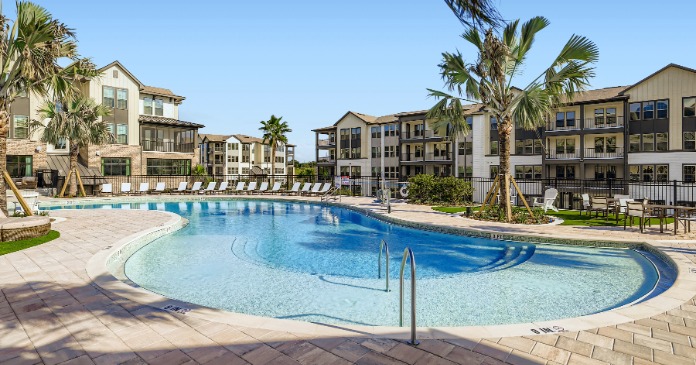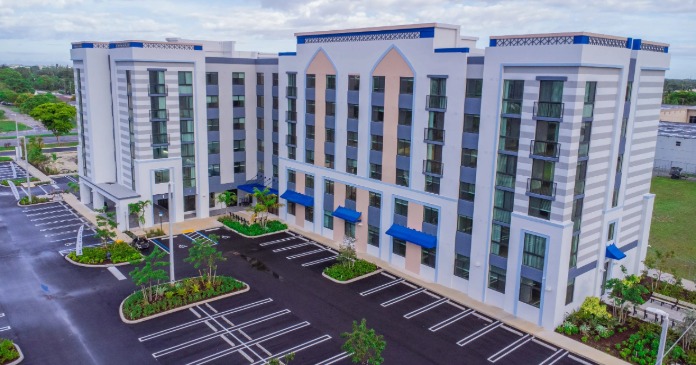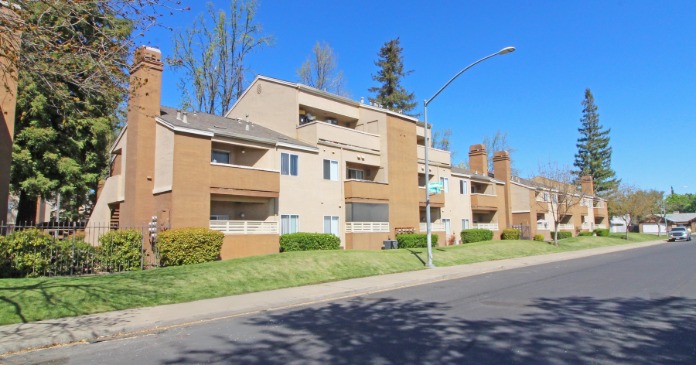Yield PRO TV presents NAHB Power Hitters. Host Linda Hoffman talks with Jim Tobin, EVP, Government Affairs & Chief Lobbyist, NAHB.
Transcript: NAHB Power Hitters interview. Linda Hoffman with Jim Tobin, recorded January 6, 2022
(music)
Linda Hoffman: It’s good to be in real estate. Record high values. Low cap rates. High occupancies. Low interest rates. Generally speaking, in many parts of the country, life is good. Real estate is great. But for anyone who’s been in the business for more than 5 minutes—we operate on cycles… and political climates… and rely on the sanctity of law and property rights, and that’s only one part of a big, complex industry driving our country’s economy and wellbeing.
2021 was a year for the history books. Along with food, gas and literally everything else on the planet, rents rose dramatically. Government action drive prices higher directly, through tariffs, prevailing wage laws and increased regulations on business practices, or indirectly, through deficit spending and expansion of the money supply. Businesses need a voice in the room when these measures are being discussed.
Every new administration in Washington presents risks and opportunities for business. Mitigating those risks and seizing those opportunities are two of our next guest’s super powers. I’m delighted to have him back on the show after helping us launch NAHB Power Hitters so long ago. Jim Tobin, EVP and chief lobbyist at one of our nation’s powerhouse advocacy organizations, NAHB. Jim, it is great to have you back on the show.
Jim Tobin: Linda, it’s great to be with you again. It’s hard to believe it’s been so long. And yet, it doesn’t seem that long in a lot of ways.
Linda Hoffman: Over a million views later.
Jim Tobin: You bet. Congratulations. That’s wonderful.
Linda Hoffman: Thank you. Since you were last on Yield Pro TV, there has been a change of guard in Washington. Give us an overview on housing from the Federal Government under the new administration?
Jim Tobin: Well, the Biden administration really came in just about a year ago now with two pillars that they want to move forward over the four years of the president’s term or first term. And there are two areas where housing aspects fits almost perfectly with them. The first is economic opportunity. People talk about it as economic environmental justice—but leveling the playing field for all those in the lower economic strata of the country—including more opportunities to those people.
The second is climate change and how do we combat the perceived threat of climate change, super storms, and how that’s going to impact the nation’s economy moving forward. And as I said, housing crosses both of those almost perfectly. Housing is the number one wealth creator in this country. It’s the gateway to the middle class for so many people. So, my job is making sure that NAHB is at the forefront of working with this administration to make sure that housing is taken care in the next four years, to make that engine of economic opportunity available for everybody starting from safe, decent, affordable rental housing, all the way to a first-time homebuyer and ownership, and then moving up as people grow their families and talk about retirement.
Climate change—that’s kind of a different story for housing with, as I mentioned, super storms and just different climate events happening across the country. We just saw the tornadoes tearing through Kentucky. You can see the impact on housing: Wildfires out West in Colorado most recently. Those things… when we talk about housing—how do we build it more resilient, or how we build more resilient or more energy-efficient to combat climate change.
Of course, when we talk about how we do build differently, we also talk about how we build more expensively in many cases, and that’s where we interact on that. As well we make sure that if we’re going to work on ways to make sure the building environment is more resilient and more efficient, but it does increase cost to counter the first Bill of this administration, which is economic opportunity.
Linda Hoffman: HUD Secretary Fudge and FHFA nominee Sandra L. Thompson have both indicated they will focus on equity in housing. How is this focus likely to change the business environment for housing providers?
Jim Tobin: We going to see, I do believe we’re going to see an infusion of money and capital and financing options down at the lower end. We talked about that economic opportunity for those who may have been left behind in the ownership model in America. So, making mortgages more affordable, more available for first-time homebuyers, first generation homebuyers—a very popular phase now in Washington, D.C. But it’s really going to be a focus now on that low end. We’re not going to see, kind of that missing middle focus where we have people that are caught, you know—maybe they already have their first home, but they’re looking to expand.
We’re certainly not going to see a focus on the high end, which does affect the high cost states like California, Illinois, my home state of Connecticut. That part of the market will generally take care of itself and administration is going to make sure that it functions, but that’s not their focus. Yeah, that focus is going to be on the low end, so that first-time homebuyer who’s in the low-income housing tax credit properties, that affordable rental—that’s where the focus of this administration kind of will be.
Linda Hoffman: The reconciliation bill, which stalled before Christmas, had $150 billion for housing. This included $65 billion for public housing, $25 billion for affordable housing, $24 billion for housing vouchers and $10 billion for down payment assistance. Thought to be dead, there are now reports that negotiations on this bill with Senator Manchin have resumed. Look into your crystal ball and tell us: what are the prospects for its passage?
Jim Tobin: Boy, if I had a crystal ball I’d be doing probably different than I am now, right? So, yeah, Joe Manchin got to play the Grinch to the Democrats and the grand plans in the White House before Christmas. There have been reports of some conversations over the last three weeks. I think those are overblown and an attempt by the White House to give a little bit more momentum to the Bill Back Better/Reconciliation Plan than there really is.
Joe Manchin came out earlier this week and threw cold water on that, and said, no, it’s not going to be about this in a serious manner. I think Joe Manchin wants to rip up the whole plan and start over. He said as much that he wants to go through the committee process. He wants Republican buy in, and, of course, we know Republicans aren’t going to buy into this.
Do I think something happens? I do. I figure it’s obviously much smaller than the $1.75 trillion that we were negotiating before Christmas. Much, much smaller than that. Maybe focus on a handful of little things that get extended or are passed for longer period of time, but I think this is just too important to the president, too important to the Democrats in general, and I think when you layer politics on it, it’s really important to get something done ahead of the midterm elections in November of this year.
Linda Hoffman: Assuming that the Reconciliation Bill does not advance, what are the chances that the housing provisions of this bill will be incorporated in other legislation?
Jim Tobin: Well, Linda, you mentioned the $150 billion in historic housing investments that were included in the Reconciliation package. And as you said, that was focused on the low end. That was all down on the voucher side, the public housing side. It’s going to take a bipartisan effort in order to move that big of a package forward. If we do get to another package, a much smaller package, I do think there will be some money in there for housing. It won’t be $150 billion.
As the packet shrinks, every facet of it shrinks, as well. I’m hopeful we’ll see some money for housing in there. On the tax side, there’s a big investment in the Low Income Housing Tax Credit program—something we very much support. But again, it’s going to take some bipartisan effort, or just a real shrinking of the pot in order to realize some extra money in housing.
That said, we have always been an advocate for a comprehensive housing program. It is time to stop looking at housing in a piecemeal fashion. Taxes here, a little bit of spending there. Let’s have a big sit down. Let’s get to a big housing package akin to what we did thirty years ago with the Cranston-Gonzales legislation, and think of housing holistically, from the low-end to the high-end, to finance, to taxes, and let’s tackle it—maybe this is our opportunity.
Linda Hoffman: NAHB and other advocates for the real estate industry were able to preserve the 1031 exchange in 2021. With the government hungry for revenue, what tax law changes are being discussed, which would impact the housing industry?
Jim Tobin: Well, thanks for recognizing our work on Like-Kind exchanges. That’s a very important financing tool for the real estate industry. Another one is Carried Interest. That was one that we were very worried about. Our multifamily developers certainly understand the value the Carried Interest provisions in this country. We were able to make sure that those were included in the package, as well.
But what do I think is in danger? I think it’s overall taxation, in general. I think that we’re going to see an increase on successful businesses in this country. We talked to—the president put a bright line—people earn $400,000 a year or less, that they will not be affected by tax changes. Our successful businessmen and women in this industry, they’re going to see their taxes go up. Whether it’s an imposition of the 4.3 percent Obama Care tax—that is going to be expanded. And more people are going to be included in that 4.3 percent tax. For our more successful members who are millionaires, we’re going to see a millionaire’s tax, as well. But I think that that is generally where we are going to see real estate get most effected—kind of on the bottom-line taxes, rather than some real rifle shots going at—specifically—real estate itself. We’ve been able to stave many of those off.
Linda Hoffman: The previous administration’s Opportunity Zones focused on more than just housing. This program was slow to roll out because of delays in developing the detailed rules for its operation. How would you rate the impact of the program on housing supply and what are the prospects for its continuation?
Jim Tobin: That’s a great question. I think from housing, I know many of our members have used Opportunity Zones to build housing. So, I think from there it’s been a success; not the great success that I think that the authors of the Opportunity Zones had hoped—so far.
Remember, we’re only three, almost four years into Opportunity Zones. You’re absolutely right. It took a long time for Treasury to get the rules out and get the rules right. I’m hopeful that we’ll see some acceleration now. Remember, Opportunity Zones go away in three more years, at the end of 2025.
If you’re going to try to drive investment in a tax program, there has to be a reasonable expectation that it’s going to extend longer than seven years or 10 years. We saw the same back after the Tax Reform Act, back in the 80s. The new Low Income Housing Tax Credit took a long time to get going because it was set to expire. Of course after they fixed in the early 90s, it accelerated and became the most important affordable housing program—for rental housing program—in our country. Opportunity Zones still has still has the chance to do that. We just have to give it a little bit more time.
Linda Hoffman: What are NAHB’s other legislative priorities for 2022 and what are the prospects of getting them done with the midterms fast approaching?
Jim Tobin: Yeah. Nothing kills legislative momentum more than the election-year. And that’s one of the things working against the Reconciliation package, now that we’ve flipped the calendar to 2022—election-year politics start getting very, very heavy.
We really only have about six months, or maybe seven, of effective legislative time between now and July to get anything done. So, our priorities: It’s fixing the supply chain and the lumber crisis that we’re going through right now.
On lumber, hard for Congress really to interact. We’ve got a tariff war with Canada right now, so that’s more of an administration plain, but we do use the power of Congress to keep leaning on this administration to do something about lumber prices.
Supply chain issues: It’s absolutely crushing the members. I’ve heard routinely of $600,000, certainly six-figure increases in supply costs, delays that are keeping projects either from penciling out, or just delaying customer delivery of apartments or single-family units. Getting Congress to pay attention to the ports, the truck drivers, the labor shortages that we’re seeing right now. Getting inflation under control, and trying to make sure that—you know we’re getting ready for the Fed to start raising interest rates to combat inflation. Interest rates may go up—are likely to go up—and mortgage rates as well.
We’ll see what kind of effect that has on the industry moving forward through the course of this year. But for us it’s about trying to get that housing package passed in some form, trying to use the Congress to combat the supply chain issues that we’re facing across the country, and then also making sure that Congress is keeping an eye on the administration to form a backstop from some of the regulatory burdens there we’re starting to see in the environmental space or some of the OSHA regulations that are starting to get promulgated from the administration. Getting Congress to keep an eye on those and kind of push back as much as they can.
Linda Hoffman: Never has your work been more important, Jim. Well, thanks for another great show. I appreciate you joining us. Thank you for your prescience in helping us launch so long ago.
Jim Tobin: Well thank you, Linda, for having me. It’s great. Congratulations on all those views and look forward to visiting with you again. Thank you.
Linda Hoffman: Hope so! Times, they are a’changing. Through it all, higher wages, more disposable income is expected to drive both urban and suburban rent growth, but mostly suburban… and mostly Class B product. Capital will continue to scout deals and multifamily will continue to be favorable for both equity and debt financing.
Setting the table for success, keeping the machine humming, is left to the capable hands of our Capitol Hill advocates like Jim Tobin and NAHB. They know the history. They understand the owners, and they know what owners and operators need. Mostly a clear path.
Thank you for joining us. I’m Linda Hoffman. Look for our next exciting episode of NAHB Power Hitters.
(music)











